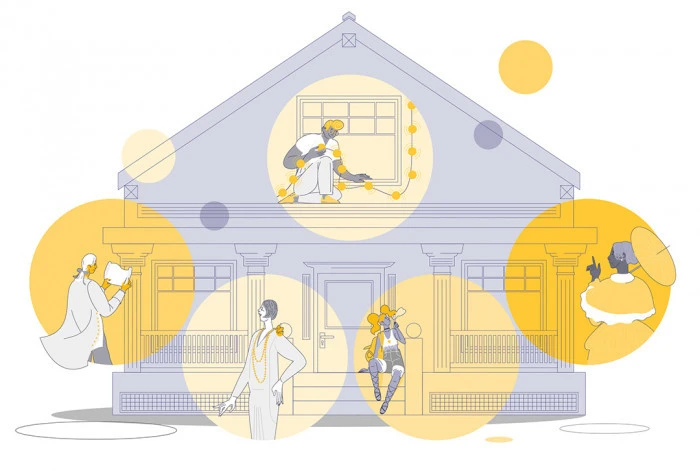Share what you know,
and discover more.
Share what you know,
and discover more.
Jan 01, 2009

-

- Charmaine Bantugan
2324 Emerson Ave S, Minneapolis, MN, USA
2324 Emerson Ave S Home History Liebenberg and Kaplan, 1928 / addition, Rabbi Max Shapiro Education Building, 1955 / addition, Bentz/Thompson/Rietow Architects, 1987 Initially known as Shaarai Tov (Gates of Goodness) and organized in 1878, this is the oldest Jewish congregation in Minneapolis. The congregation, which became Temple Israel in 1920, occupied several other buildings before constructing this Classical Revival-style synagogue. Symbolic elements are worked into the design, including the five front doors that represent the books of the Torah. The sanctuary is renowned for its acoustics. Architect Jack Liebenberg used tiles made from sugar beet stalks to modulate the sound. The tiles worked so well here that he also used them in his theaters, including the nearby Suburban World. The Rabbi Max Shapiro Education Building was added to the synagogue in 1955, and another addition completed in 1987 includes a small theater, meeting rooms, and offices. Citation: Millett, Larry. AIA Guide to the Minneapolis Lake District. Minnesota Historical Society Press, 2009.
2324 Emerson Ave S, Minneapolis, MN, USA
2324 Emerson Ave S Home History Liebenberg and Kaplan, 1928 / addition, Rabbi Max Shapiro Education Building, 1955 / addition, Bentz/Thompson/Rietow Architects, 1987 Initially known as Shaarai Tov (Gates of Goodness) and organized in 1878, this is the oldest Jewish congregation in Minneapolis. The congregation, which became Temple Israel in 1920, occupied several other buildings before constructing this Classical Revival-style synagogue. Symbolic elements are worked into the design, including the five front doors that represent the books of the Torah. The sanctuary is renowned for its acoustics. Architect Jack Liebenberg used tiles made from sugar beet stalks to modulate the sound. The tiles worked so well here that he also used them in his theaters, including the nearby Suburban World. The Rabbi Max Shapiro Education Building was added to the synagogue in 1955, and another addition completed in 1987 includes a small theater, meeting rooms, and offices. Citation: Millett, Larry. AIA Guide to the Minneapolis Lake District. Minnesota Historical Society Press, 2009.
Jan 01, 2009
2324 Emerson Ave S, Minneapolis, MN, USA
2324 Emerson Ave S Home HistoryLiebenberg and Kaplan, 1928 / addition, Rabbi Max Shapiro Education Building, 1955 / addition, Bentz/Thompson/Rietow Architects, 1987
Initially known as Shaarai Tov (Gates of Goodness) and organized in 1878, this is the oldest Jewish congregation in Minneapolis. The congregation, which became Temple Israel in 1920, occupied several other buildings before constructing this Classical Revival-style synagogue. Symbolic elements are worked into the design, including the five front doors that represent the books of the Torah. The sanctuary is renowned for its acoustics. Architect Jack Liebenberg used tiles made from sugar beet stalks to modulate the sound. The tiles worked so well here that he also used them in his theaters, including the nearby Suburban World. The Rabbi Max Shapiro Education Building was added to the synagogue in 1955, and another addition completed in 1987 includes a small theater, meeting rooms, and offices.
Citation: Millett, Larry. AIA Guide to the Minneapolis Lake District. Minnesota Historical Society Press, 2009.
Posted Date
Sep 18, 2023
Historical Record Date
Jan 01, 2009
Source Name
AIA Guide to the Minneapolis Lake District
Delete Story
Are you sure you want to delete this story?











